 W
WWind tunnels are large tubes with air blowing through them. The tunnels are used to replicate the actions of an object flying through the air or moving along the ground. Researchers use wind tunnels to learn more about how an aircraft will fly. NASA uses wind tunnels to test scale models of aircraft and spacecraft. Some wind tunnels are large enough to contain full-size versions of vehicles. The wind tunnel moves air around an object, making it seem as if the object is really flying.
 W
WA2 Wind Tunnel is a full-scale general-purpose open-return wind tunnel located in Mooresville, North Carolina. Created in 2006 by Gary Eaker, the tunnel is able to host a variety of objects including full scale cars, motorcycles, and bicycles.
 W
WAerodium Sigulda is a company based in Latvia, which owns and runs the first vertical wind tunnel in Eastern Europe. The wind tunnel is located near Sigulda, the most visited tourist area in Latvia. It is affiliated with Aerodium Technologies, a designer and producer of vertical wind tunnels. While being open to the public, it also serves as a testing base for new technologies and training place for instructors.
 W
WAEDC Aerodynamic and Propulsion Test Unit (APTU) is a blowdown hypersonic wind tunnel driven by a combustion air heater (CAH). The facility is owned by the United States Air Force and operated by Aerospace Testing Alliance.
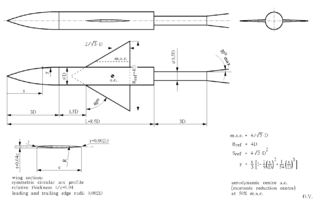 W
WAGARD-B is a standard wind tunnel model that is used to verify, by comparison of test results with previously published data, the measurement chain in a wind tunnel. Together with its derivative AGARD-C it belongs to a family of AGARD standard wind tunnel models. Its origin dates to the year 1952, and the Second Meeting of the AGARD Wind Tunnel and Model Testing Panel in Rome, Italy, when it was decided to define two standard wind tunnel model configurations to be used for exchange of test data and comparison of test results of same models tested in different wind tunnels. The idea was to establish standards of comparison between wind tunnels and improve the validity of wind tunnel tests. Among the standard wind tunnel models, AGARD model configuration B (AGARD-B) has become by far the most popular. Initially intended for the supersonic wind tunnels, the AGARD-B configuration has since been tested in many wind tunnels at a wide range of Mach numbers, from low subsonic, through transonic to hypersonic. Therefore, a considerable database of test results is available.
 W
WThe Ames Research Center (ARC), also known as NASA Ames, is a major NASA research center at Moffett Federal Airfield in California's Silicon Valley. It was founded in 1939 as the second National Advisory Committee for Aeronautics (NACA) laboratory. That agency was dissolved and its assets and personnel transferred to the newly created National Aeronautics and Space Administration (NASA) on October 1, 1958. NASA Ames is named in honor of Joseph Sweetman Ames, a physicist and one of the founding members of NACA. At last estimate NASA Ames has over US$3 billion in capital equipment, 2,300 research personnel and a US$860 million annual budget.
 W
WAuto Research Center, also known as ARC Indy, is a research and development company with headquarters in Indianapolis, Indiana USA. It was founded as Reynard Motorsports North American headquarters, and became its own company in 2002.
 W
WChalais-Meudon is an aeronautical research and development centre in Meudon, to the south-west of Paris. It was originally founded in 1793 in the nearby Château de Meudon and has played an important role in the development of French aviation.
 W
WThe Eight-Foot High Speed Tunnel, also known as Eight-Foot Transonic Tunnel, was a wind tunnel located in Building 641 of NASA's Langley Research Center in Hampton, Virginia. It was a National Historic Landmark.
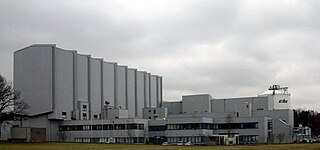 W
WThe European transonic wind tunnel (ETW) is a high-Reynolds-number transonic wind tunnel using nitrogen as test gas.
 W
WThe Full-Scale Tunnel was a wind tunnel at NASA's Langley Research Center. It was a National Historic Landmark.
 W
WThe Glenn L. Martin Wind Tunnel was founded in 1949 after Glenn L. Martin gave a grant to the University of Maryland, College Park. This grant was used to expand the A. James Clark School of Engineering and build Glenn L. Martin Hall. The tunnel has served many clients over the years, conducting over 2000 tests. The tunnel is a low speed wind tunnel participating in testing ranging from automotive to aviation and more. The current director of the tunnel is Dr. Jewel Barlow. The tunnel is an auxiliary resource to the University of Maryland, generating all necessary income to continue operation of the tunnel. They work primarily with external clients interested in developing products with aerodynamics in mind.
 W
WA gun tunnel is an intermediate altitude hypersonic wind tunnel that can be configured to produce hypersonic flows at roughly 30 to 40 km altitude. This uses a piston for isentropic compression. The hypersonic facility at IISC Bangalore, India has a high enthalpy gun tunnel, which can produce Schlieren imaging and produce up to 8 megajoules of energy. Using a piston can be very tricky due to reflecting of shocks. At the facility, they use aluminium diaphragm to produce shocks and paper diaphragm to avoid shocks and pass through the hypersonic chamber. The pressure used is significantly higher like 30 times the atmosphere.
 W
WA hypersonic wind tunnel is designed to generate a hypersonic flow field in the working section, thus simulating the typical flow features of this flow regime - including compression shocks and pronounced boundary layer effects, entropy layer and viscous interaction zones and most importantly high total temperatures of the flow. The speed of these tunnels vary from Mach 5 to 15. The power requirement of a wind tunnel increases with the cross section, the flow density and is directly proportional to the third power of the test velocity. Hence installation of a continuous, closed circuit wind tunnel remains a costly affair. The first continuous Mach 7-10 wind tunnel with 1x1 m test section was planned at Kochel am See, Germany during WW II and finally put into operation as 'Tunnel A' in the late 1950s at AEDC Tullahoma, TN, USA for an installed power of 57 MW. In view of these high facility demands, also intermittently operated experimental facilities like blow-down wind tunnels are designed and installed to simulate the hypersonic flow. A hypersonic wind tunnel comprises in flow direction the main components: heater/cooler arrangements, dryer, convergent/divergent nozzle, test section, second throat and diffuser. A blow-down wind tunnel has a low vacuum reservoir at the back end, while a continuously operated, closed circuit wind tunnel has a high power compressor installation instead. Since the temperature drops with the expanding flow, the air inside the test section has the chance of becoming liquefied. For that reason, preheating is particularly critical.
 W
WAEDC Hypervelocity Wind Tunnel 9 is a hypersonic wind tunnel owned by the United States Air Force and operated by National Aerospace Solutions The facility can generate high Mach numbers and high Reynolds for hypersonic ground testing and the validation of computational simulations for the Air Force and Department of Defense.
 W
WWilliam "Bill" Joel Kitchen is an American inventor and business executive. Kitchen is the Founder and Chief Executive Officer of U.S. ThrillRides, Inc. and Thrillcorp, Inc.
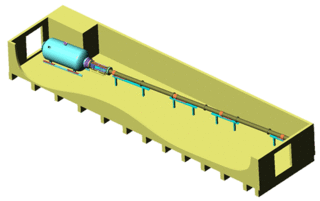 W
WA Ludwieg tube is a cheap and efficient way of producing supersonic flow. Mach numbers up to 4 in air are easily obtained without any additional heating of the flow. With heating, Mach numbers of up to 11 can be reached.
 W
WThe MARHy Hypersonic low density Wind Tunnel, located at the ICARE Laboratory in Orléans, France, is a research facility used extensively for fundamental and applied research of fluid dynamic phenomena in rarefied compressible flows. Its name is an acronym for Mach Adaptable Rarefied Hypersonic and the wind tunnel is recorded under this name under the European portal MERIL.
 W
WThe National Transonic Facility (NTF), also known internally as facility 1236, is a high-pressure, cryogenic, closed-circuit wind tunnel at the Langley Research Center in Hampton, Virginia. It uses nitrogen gas, at high pressure, to cool the air which allows flight aerodynamics to be duplicated in small scale. The cross section of the tunnel is 8.2 feet (2.5 m) high and 8.2 feet (2.5 m) wide. Unlike full-scale wind tunnels, the NTF can adjust airflow to match any model size down to 1/50 scale. The facility can operate liquid nitrogen is sprayed into the circuit or at ambient air temperature.
 W
WThe PHEDRA High Enthalpy low density Wind Tunnel, located at the ICARE Laboratory in Orléans, France, is a research facility used extensively for fundamental and applied research on non equilibrium plasma flows and planetary atmospheric entries. Its name is an acronym for soufflerie à Plasma Hors Equilibre de Rentreés Atmosphériques. Phedra wind tunnel takes part of the European Landscape Network portal MERIL.
 W
WThe Propeller Research Tunnel (PRT) was the first full-scale wind tunnel at the National Advisory Committee for Aeronautics (NACA) Langley Research Center, and the third at the facility. It was in use between 1927 and 1950 and was instrumental in the drag reduction research of early American aeronautics. In 1929, NACA was awarded its first Collier Trophy for the NACA cowling which was tested and developed using the Propeller Research Tunnel.
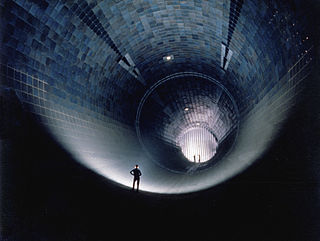 W
WThe Propulsion Wind Tunnel Facility, located at Arnold Engineering Development Complex, Arnold Air Force Base, Tennessee, holds three wind tunnels: the 16-foot transonic (16T), 16-foot supersonic (16S), and the aerodynamic 4-foot transonic (4T) tunnels. The facility is devoted to aerodynamic and propulsion integration testing of large-scale aircraft models. The tunnels are powered by a large compressor plant which allows the wind tunnels to run for extended periods of time. The test unit is owned by the United States Air Force and operated by Aerospace Testing Alliance.
 W
WThe R. J. Mitchell Wind Tunnel is a low-speed wind tunnel which is part of the Faculty of Engineering and the Environment at the University of Southampton. It is the largest wind tunnel in University ownership in the UK. It is named after famed British aircraft designer R.J. Mitchell.
 W
WStandard wind tunnel models, also known as reference models, calibration models or test check-standards are objects of relatively simple and precisely defined shapes, having known aerodynamic characteristics, that are tested in wind tunnels. Standard models are used in order to verify, by comparison of wind tunnel test results with previously published results, the complete measurement chain in a wind tunnel, including wind tunnel structure, quality of the airstream, model positioning, transducers and force balances, data acquisition system and data reduction software.
 W
W W
WA supersonic wind tunnel is a wind tunnel that produces supersonic speeds (1.2<M<5) The Mach number and flow are determined by the nozzle geometry. The Reynolds number is varied by changing the density level. Therefore, a high pressure ratio is required. Apart from that, condensation of moisture or even gas liquefaction can occur if the static temperature becomes cold enough. This means that a supersonic wind tunnel usually needs a drying or a pre-heating facility. A supersonic wind tunnel has a large power demand, so most are designed for intermittent instead of continuous operation.
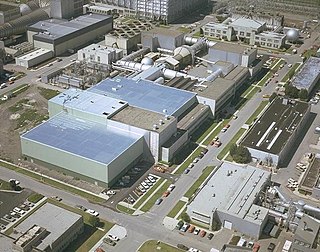 W
WThe Unitary Plan Wind Tunnel, located at the NASA Ames Research Center in Moffett Federal Airfield, Mountain View, California, United States, is a research facility used extensively to design and test new generations of aircraft, both commercial and military, as well as NASA space vehicles, including the Space Shuttle. The facility was completed in 1955 and is one of five facilities created after the 1949 Unitary Wind Tunnel Plan Act supporting aeronautics research.
 W
WThe Variable Density Tunnel (VDT) was the second wind tunnel at the National Advisory Committee for Aeronautics (NACA) Langley Research Center. Proposed by German aerospace engineer, Max Munk in May, 1921, it was the world's first variable density wind tunnel and allowed for more accurate testing of small-scale models than could be obtained with atmospheric wind tunnels. It was actively used as a wind tunnel from 1923 until its retirement in the 1940s. Langley Research Center historian, James R. Hansen, wrote that the VDT provided results superior to the atmospheric wind tunnels used at the time and was responsible for making NACA, the precursor to NASA, "a world leader in aerodynamic research". It is now on display on the Langley grounds, near the old Reid Conference Center and is a National Historic Landmark.
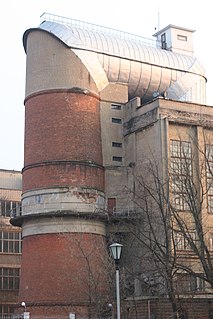 W
WA vertical wind tunnel (VWT) is a wind tunnel which moves air up in a vertical column. Unlike standard wind tunnels which have test sections that are oriented horizontally, as experienced in level flight, a vertical orientation enables gravity to be countered by drag instead of lift, as experienced in an aircraft spin or by a skydiver at terminal velocity.